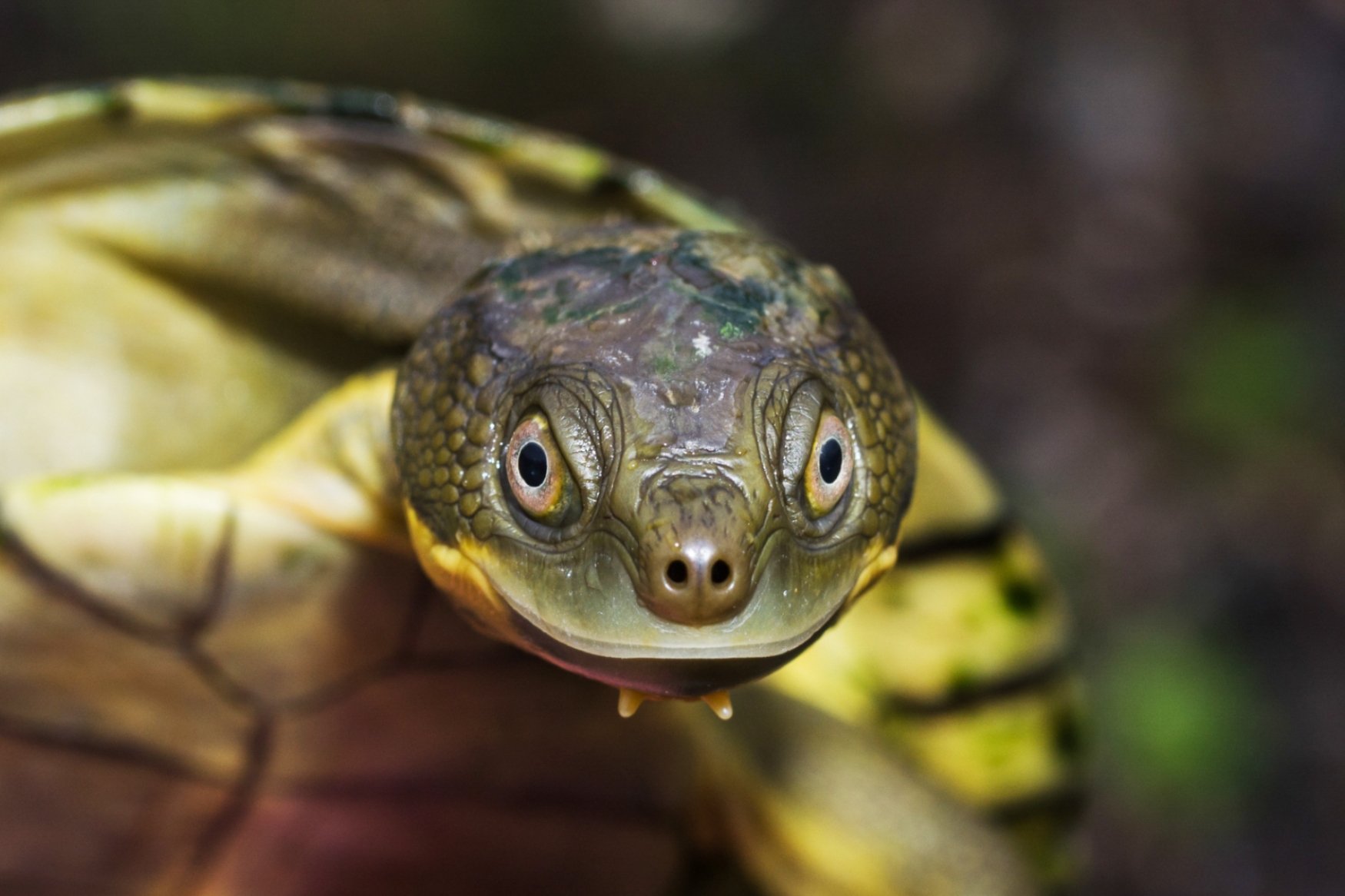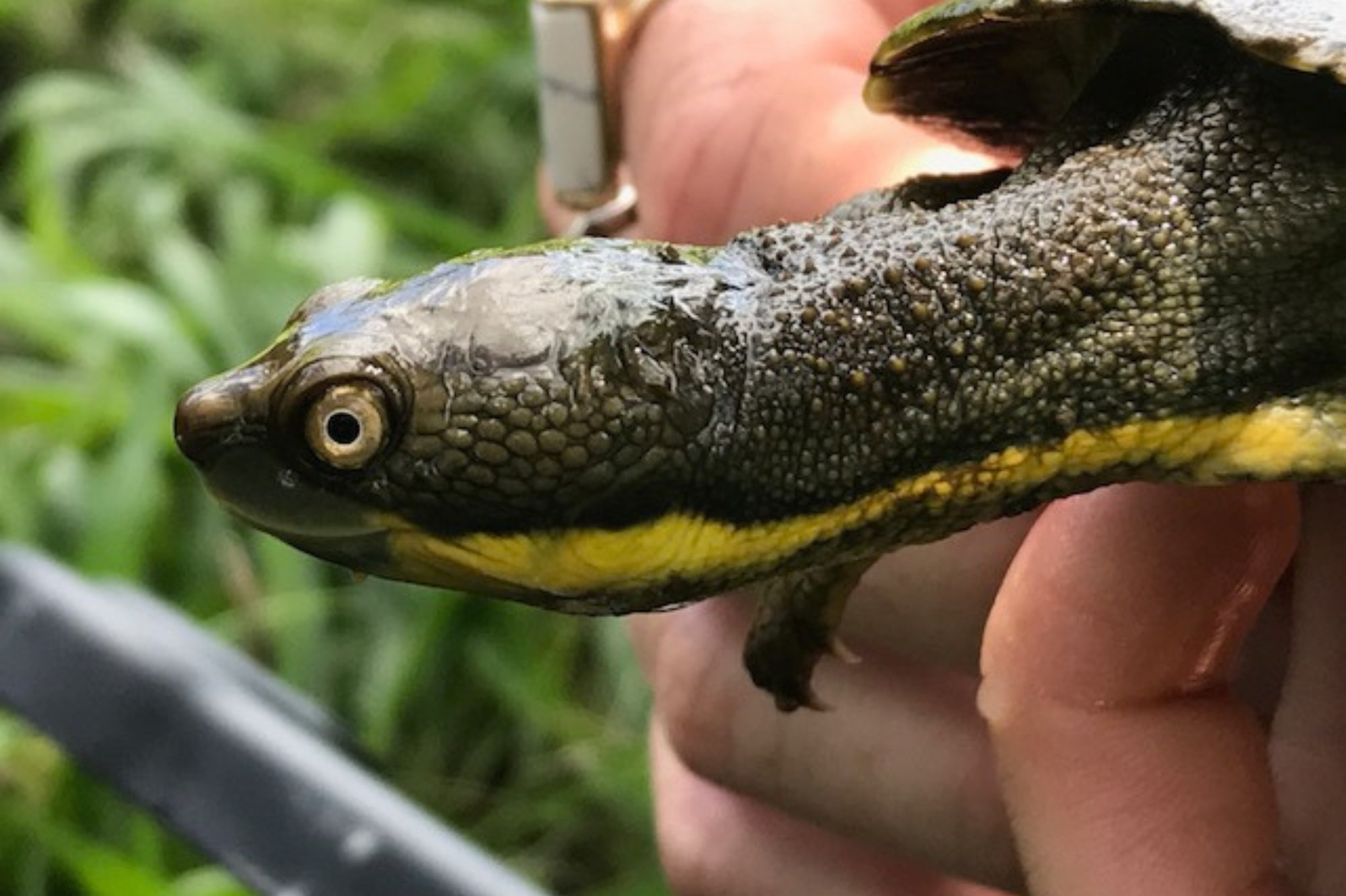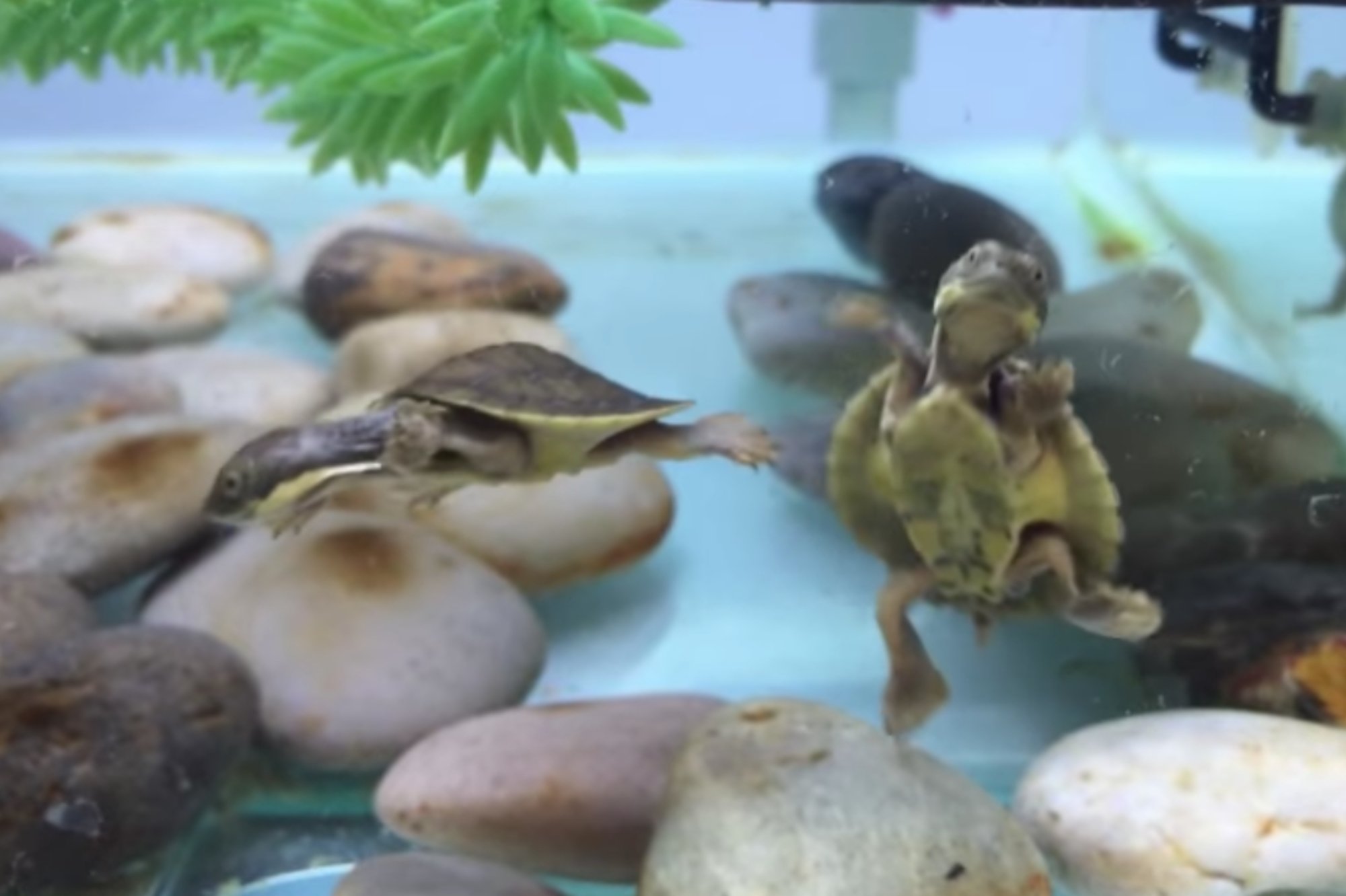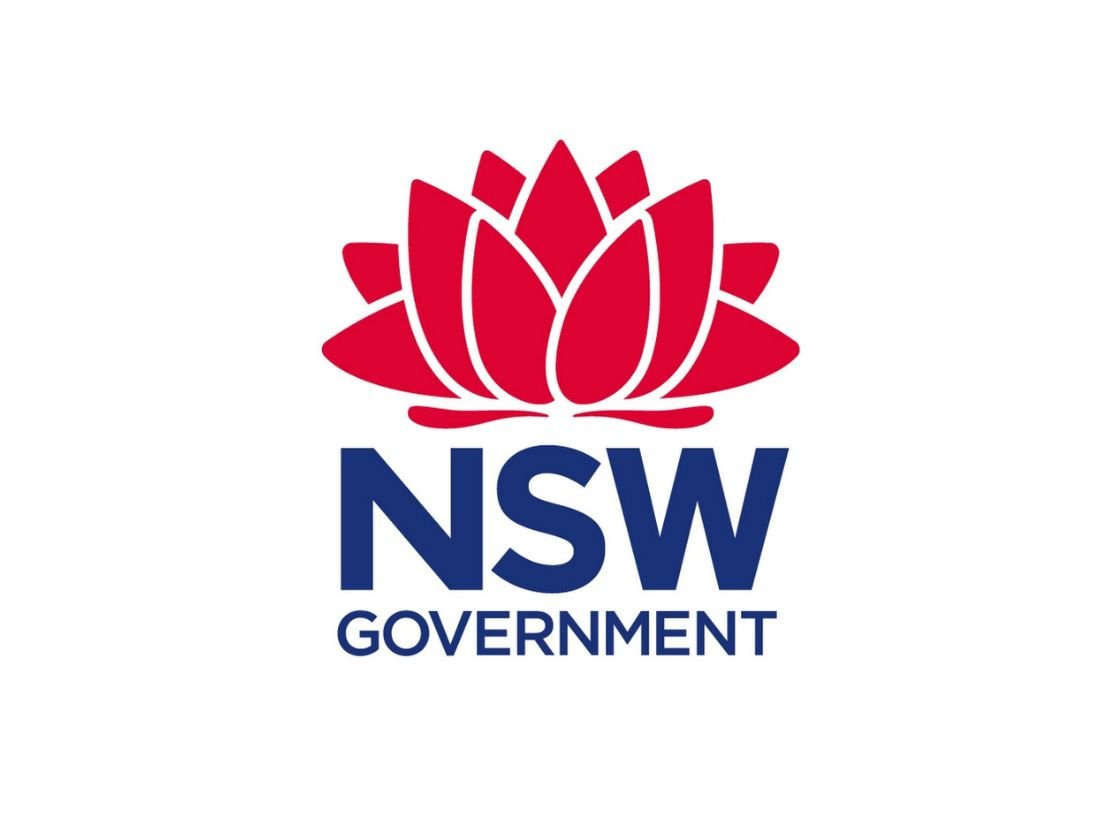
About the Turtle
The Bellinger River Snapping Turtle (Myuchelys georgesi) is a species of short-necked freshwater turtle in the family Chelidae and is iconic to the Bellinger River, NSW. Previously known as Elseya georgesi, and Wollumbinia the BRST was first observed by John Cann in 1971.
The Bellingen River Snapping Turtle (BRST) is currently listed as Critically Endangered under the NSW Biodiversity Conservation Act 2016 and the Commonwealth Environment Protection and Biodiversity Conservation Act 1999.
Image : Shane Ruming
4 Key Questions to identify turtles
of the Bellinger and Kalang catchments
The Bellinger River Snapping turtle (BRST) should not be confused with the non-native short-necked turtle Emydura Macquarii which also inhabits the Bellinger River. Distinctive features on the BRST include a yellow stripe from the angle of the jaws, as well as distinct ‘bar-bells’ on the chin.
Photo: Paul Fahey
Population
The current Bellinger River Turtle population is estimated to be less than 200 individuals and predominantly juveniles.
In 2005 the population was estimated between 3100-5900 individuals. After abnormal rainfall conditions and historically low river levels the population declined and in early 2015 (prior to the mortality event) was estimated between 1,600 – 4500 individuals.
Endemic to the Bellinger River
The Bellingen River Snapping Turtle is found in only one place on earth - approximately a 55 kilometre stretch of the Bellinger River on the Mid North Coast of NSW.
Image : Shane Ruming
With less than 200 left in our river,
the situation remains critical.



Photo: Paul Fahey
-
Bellingen River Snapping Turtles feed on macroinvertebrates, terrestrial fruit and aquatic vegetation. They obtain a high proportion of their diet from benthic macro-invertebrate communities.
As juveniles, they have strong leniencies towards carnivorous diets, while as adults they are omnivorous, commonly consuming caddisfly larvae, pyralidae larvae (moth larvae), ribbon weed and algae.
Turtle nesting sites can be found on river banks in areas of sand and fine gravel. Turtle nests are often at risk from fox and goanna predation.
-
The main threats to this species include predation by foxes, poor water quality, and the past virus outbreak. The macro invertebrates that this species like to eat (caddisfly larvae) require particularly high levels of oxygen.
-
To report any turtle sightings, nesting sites or turtle health issues, please ring Enviroline on 6659 8200.
Turtles can be mapped using Turtle SAT
www.turtlesat.org.au/turtlesat
How to Use Turtle SAT
https://drive.google.com/file/d/0B2aFwaZEfKupaFdVRnhYNDZSZTJrSGFYSHhiUXMzTjNBblVN/view
Stay up to date with the Bellinger River Snapping Turtle
The Department of Planning and Environment and its’ Saving our Species team posts updates about the Bellinger RIver Snapping turtle conservation project here.
Photo: Ricky Spencer
Bellingen Riverwatch would like to thank the Department of Planning and Environment and its’ Saving our Species Program and the Bellingen Shire Council for their ongoing support over the last six years.








